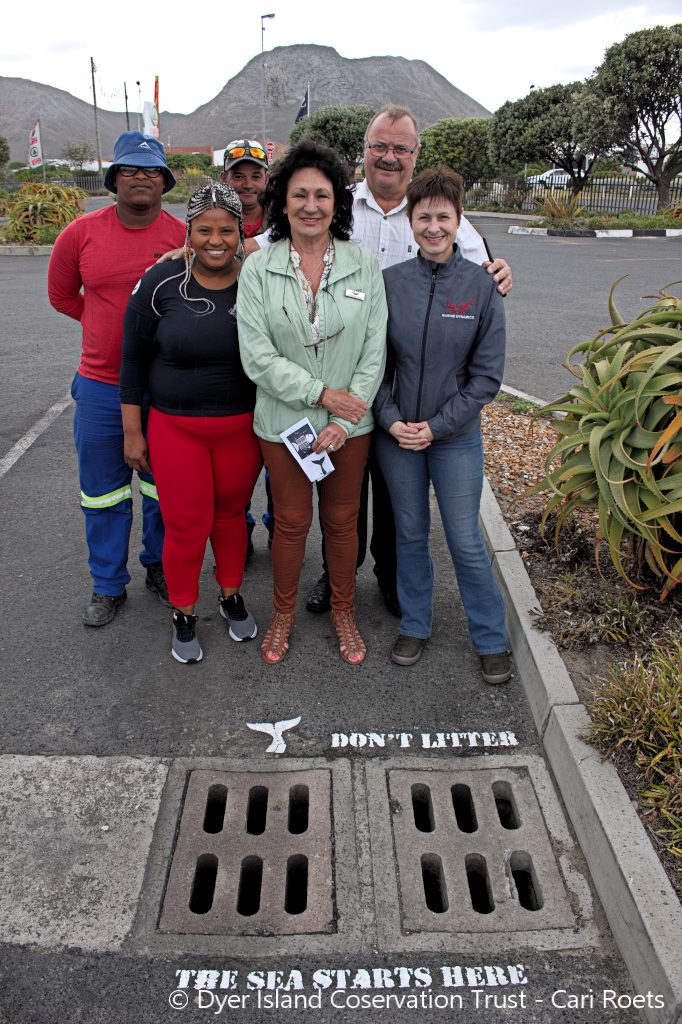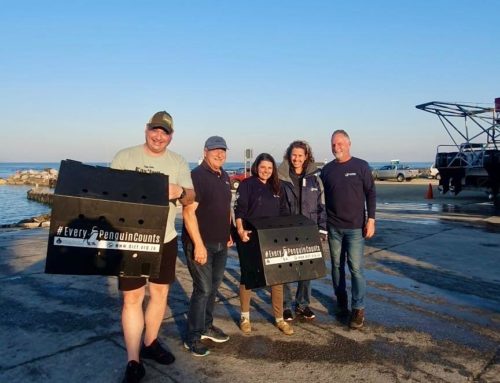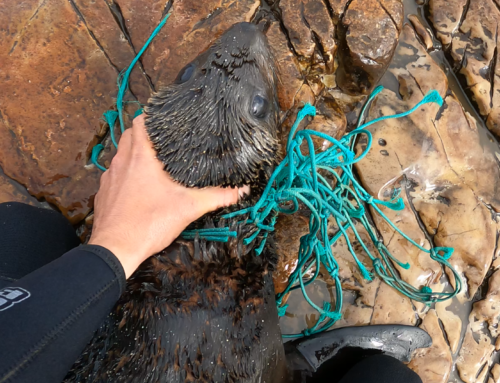Efforts to stem the tide of marine pollution are taking place in Gansbaai, Western Cape, South Africa.
The Overstrand Municipality is working in partnership with Marine Dynamics and the Dyer Island Conservation Trust to prevent waste from reaching the ocean.
Councillor Riana de Coning and Overstrand Municipality Gansbaai Manager Francois Myburgh met with the Trust representatives Pinkey Ngewu and Brenda du Toit, to place stencils on the drains in town with a message of “Don’t Litter. The Sea Starts Here.”
De Coining remarked that it is important to remind the public that “Everything that flows down the stormwater drain, including discarded waste, ultimately flows into the ocean.”
Gansbaai is part of the Cape Whale Coast and the stencils were chosen with this in mind. Some fish stencils are also planned. “We draw inspiration from the great work being done by Knysna Municipality that recently launched the seahorse stencil campaign. The stencils are phase two of Project Storm following on from the storm drain nets that were placed in June 2019.”
Inspired by a project in Australia, Wilfred Chivell of Marine Dynamics Tours and founder of the Dyer Island Conservation Trust, realised the need for a net system over the stormwater drain outlets in Gansbaai. The first identified site was Gansbaai Harbour, an area notorious for pollution originating from a central point in town. The nets are designed to prevent pollutants and solid waste, carried by stormwater from the local road network, from flowing into the marine environment.
The Trust has called this Project Storm and has received enquiries from around South Africa on how to take this forward in various areas.
The net was monitored by the Dyer Island Conservation Trust team with the support of Marine Dynamics Academy to assess the ‘catch’. After only 12 analysed net counts, the statistics have been frightening.
Cigarettes/Cigarette filters were the top offending item at 25671. This was followed by: Food Wrappers/Containers 12118 Microplastics 4663, Foil pieces 3515, Plastic Pieces 3459, Paper packaging/pieces 3163, Bags (plastic) 3137, Polystyrene 1795.00, Straws, Stirrers, Sucker sticks 1054.
Brands were also reviewed. Plastic bottles and cans were prominent items found in the net with Golden Valley (60) the highest bottle polluter recorded, followed by Coca-Cola (13) and Aquella (13). Score cans (41) came in tops followed by Coca-cola (21). The top ten food wrapper brands found: Truda (298), Tayas (248), Simba (229), Smoothies (227), Halls (138), Beacon (127), Nestle (123), Ciri (99), Cadbury (97), Pengo (85). In all 299 different food wrappers were counted, 33 plastic bottle brands and 30 can brands. Chip packets fall under food wrappers – sadly these are non-recyclable.
Wilfred had this to say about Project Storm, “We hope that through this project we can minimise the impact on our marine wildlife by reducing the amount of waste entering the marine system, as well as use the statistics to educate the public of the impact poorly discarded trash has on the ecosystem. I am also so glad that we have the incredible support of the Overstrand Municipality to jointly work on such projects.”
With 63 stormwater outlets in Gansbaai alone, this is a long-term collaborative project with the Overstrand Municipality, with an initial focus on the most problematic areas along the Overstrand. The Dyer Island Conservation Trust and the Overstrand Municipality are partners in various projects that include environmental education, beach clean-ups, fishing line bins, animal rescue and more.
Interested companies can sponsor the manufacture of a net for R5000 and can get in touch with the Dyer Island Conservation Trust to do so. The storm nets will be mapped on the Trust website so each company will be acknowledged for their contribution in this way.
Contact Brenda du Toit under brenda@dict.org.za to support Project Storm.

Representatives from the Overstrand Municipality and the Dyer Island Conservation Trust excited to launch this project!

One of our storm water drainage nets from phase 1 of Project Storm

These stencils will be placed all over the Overstrand area.

“Don’t litter – the sea starts here”





